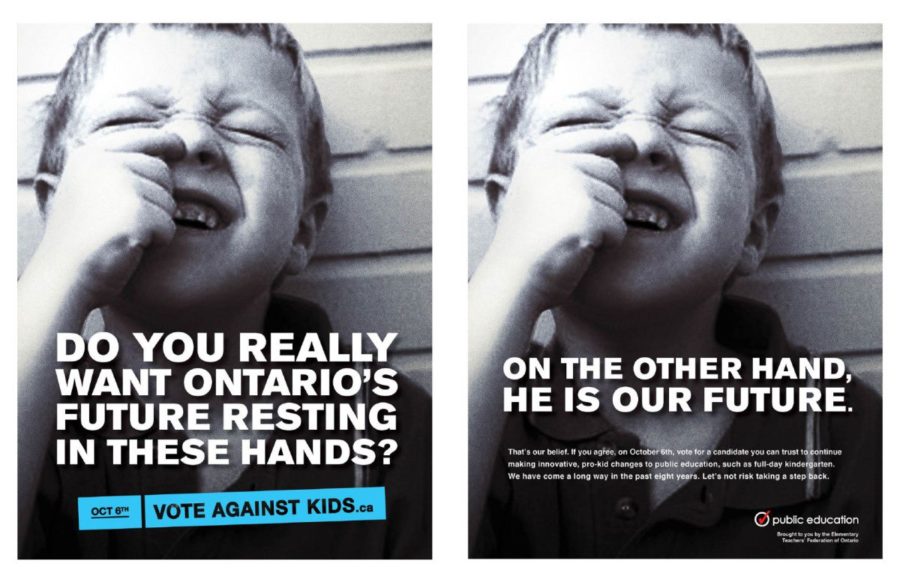The Use Of Kids In Political Advertisements
May 8, 2022
Politics are the activities associated with the governance of a country or other area, especially the debate or conflict among individuals or parties having or hoping to achieve power. There are many ways to get somebody to agree with you, but by far one of the most effective ways a politician can get you on their side is your kids. Today advertisements are everywhere and are commonplace while campaigning for a position of power whether it’s local or on a larger scale. Some ads are designed to personally attack the beliefs of a rivaling politician using emotionally provocative images, ideas, and situations, i.e. attack ads. A good example of this is the nationwide debate on gun control laws. Figures and organizations opposed to stricter gun laws might release a commercial trying to make you feel unsafe and unable to protect yourself and your family without the use of a gun. They might propose hypotheticals of armed burglars and display breaking and entering statistics to make you feel unsafe. On the other hand, an ad for additional gun laws might try to provoke you with testimonies from school shooting survivors or headlines from gun-related deaths involving children. The point of this is after getting you emotional, they then attack a candidate voting differently, for allowing the same type of weapons that kill children in schools to get onto the street or restricting your right to buy a firearm and have a means of protection during these trying times. Overall attack ads spread good information, but also have half-truths and the purpose of them isn’t to convince you a certain candidate is a good option, it’s to shed a bad light on somebody else and get you to disagree with somebody’s opponent.
The use of kids is a pattern you could recognize quickly. A parent’s first instinct is to protect their kids so often that’s the first place politics go; if this happens or you don’t do this, our kids will be harmed. The use of kids doesn’t only provoke parents as in general children have become a symbol of innocence, future, and hope. Hilary Clinton had used kids in more of a positive light as she bashed Donald Trump and some of the more vulgar things he stated throughout their debate. She went on to display young children watching the offensive content in their homes while the message “Our children are watching,” appears. She goes on to seat a crying 10-year-old on her lap and tell her “I’ll do all the worrying.” The video does a good job at making Hillary Clinton’s cold persona more comforting and motherly and putting Donald Trump in a bad light for his use of belligerent language.
Kamala Haris’s use of children is different as she starts her advertisement by telling a story of her mother. She talks about how she would work all day and come home and devote her time to giving Kamala and her sister Maya a good childhood. She goes on to describe how when they were asleep in bed, her mother would stay up trying to figure out how to make things work. “That’s something Americans know all too well,” she says this to connect her emotionally heavy story to the large audience so she can introduce her 3 AM agenda. “A real plan to solve those worries;” the kinds of worries that keep regular people up at three in the morning. Her video has the purpose of establishing a solid connection between her and the viewer so her promises of change and aid aren’t coming from an entity seeming bleak and dishonest.
At surface value, the involvement of children with politics isn’t anything to think about, but with more and more young people on the internet and tv, many teens are taking an interest and developing opinions on the world and its many problems, emotionally provocative ads could lead to more misguided or extreme world views in teens. With new policy changes in 2019 political ad campaigns can’t target a demographic based only on location, gender, and age. This means some kids are receiving just as many politically targeted ads as many adults giving them bad impressions and examples.





















































































































































